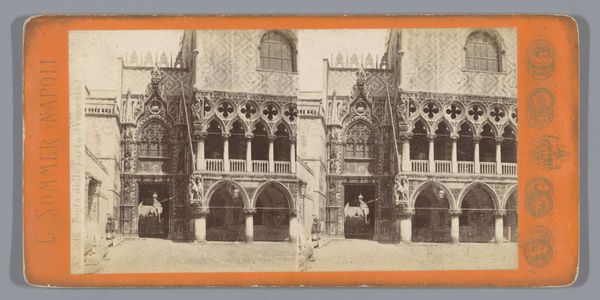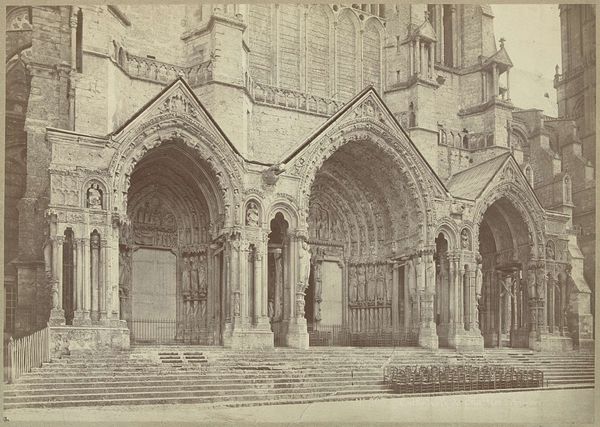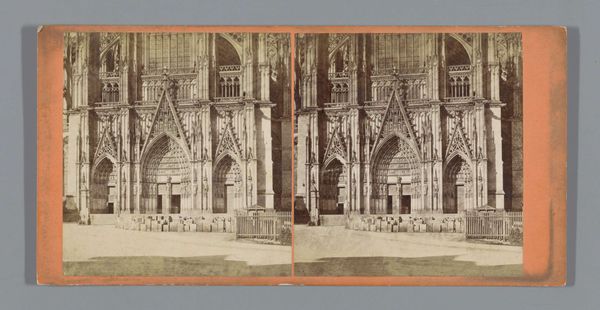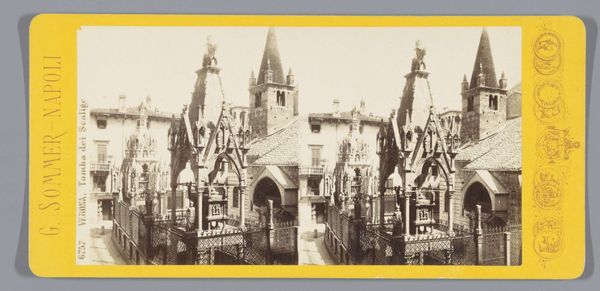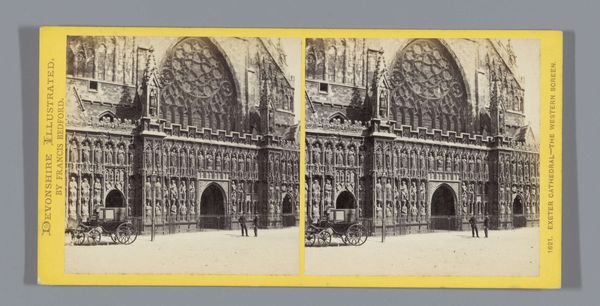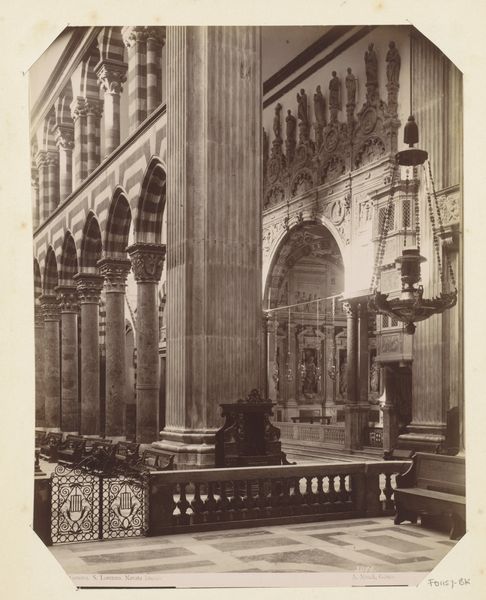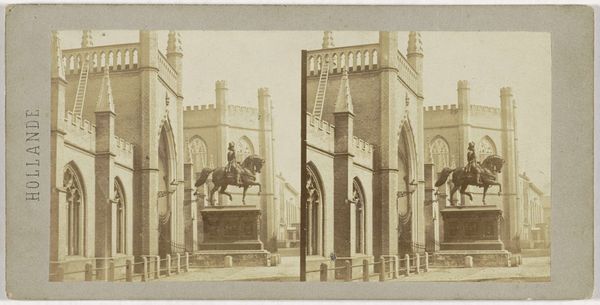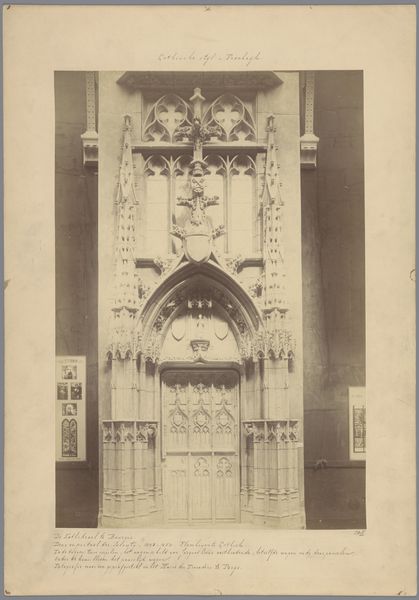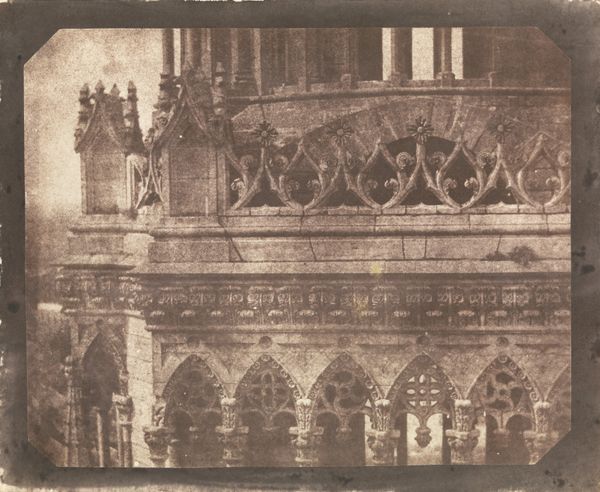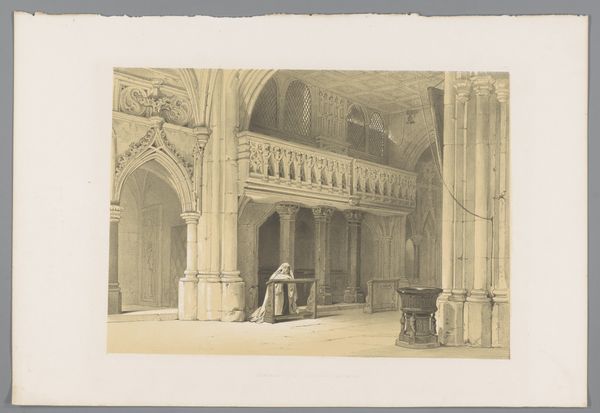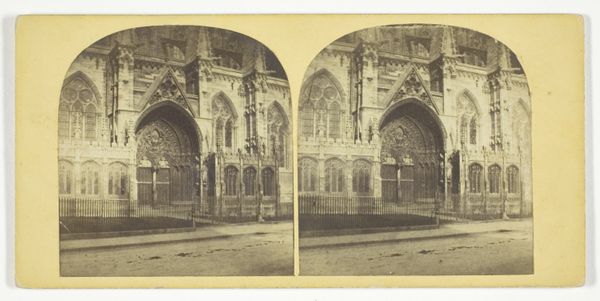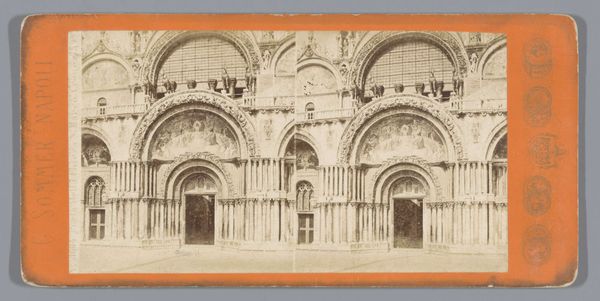
Dimensions: height 83 mm, width 176 mm
Copyright: Rijks Museum: Open Domain
Curator: Here we have Carlo Naya’s photograph, "Entrance to the Doge's Palace, Venice," likely taken between 1850 and 1880, captured with a gelatin-silver print. The precision! What strikes you immediately? Editor: Well, apart from immediately wanting to book a gondola ride, I'm mesmerized by the intricacy. It's as if the photographer captured the very breath of Venice, frozen in this elegant facade. So much detail...makes me feel tiny. Curator: Naya's process, of course, reveals much about photographic practices of the time. The gelatin-silver process allowed for remarkable clarity and tonal range, perfectly suited to capturing the Doge's Palace’s architectural nuances. Think about the labour and resources involved in capturing this single view. Editor: Absolutely. There’s something quite profound about that clash between the grandiosity of the subject matter and the almost clinical process used to record it. This image speaks to that 19th-century obsession with cataloging beauty and wonder – framing it within the reach of mass production. A democratisation of visual splendour! Curator: Exactly! The mass production element is vital. Romanticism often leaned toward idealization. However, with photography's rise and images like Naya's becoming more accessible through mass reproduction, it influenced urban development, tourism, and the consumption of places. Editor: It makes me think about what is "authentic"– what *was* authentic, even then? We gaze upon Venice now, partly through a lens shaped by images like this one. I wonder if 19th century travellers felt as overwhelmed and giddy with romance in Venice, just like Naya seems to propose, or if that’s just clever photographic manipulation. Curator: Good question! Venice was always a stage for performance and representation, well before the invention of the camera. Editor: True. I guess that is the point of the gelatin silver print to take reality to performance in an effort of the Romantic art style. In that sense, this photo feels less like a historical document, and more like a dreamy postcard. A beautifully haunting one, at that. Curator: Agreed. This photograph encourages reflection on the interplay between representation and lived experience, something that keeps Venice forever captivating.
Comments
No comments
Be the first to comment and join the conversation on the ultimate creative platform.
